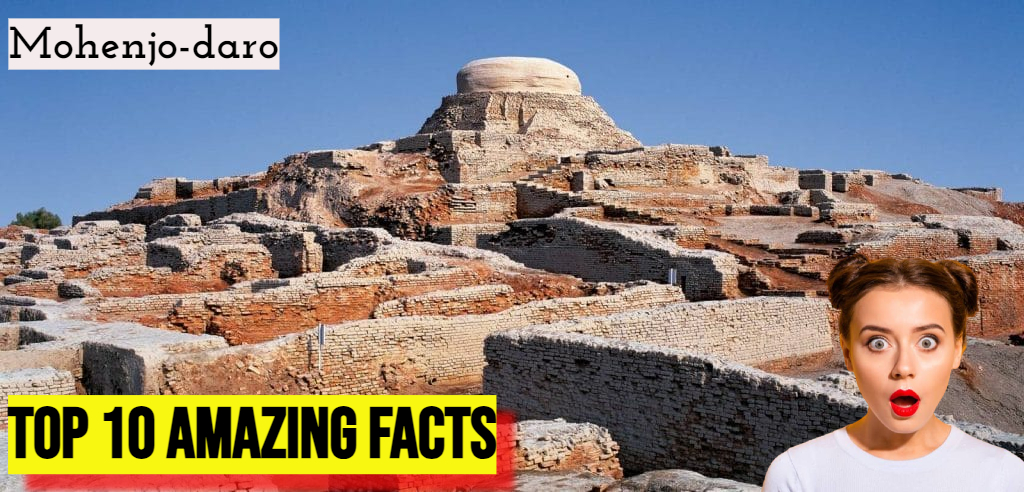Mohenjo-Daro is an ancient archaeological site located in present-day Pakistan, and it’s one of the most important settlements of the ancient Indus Valley Civilization.

Here are the top 10 fascinating facts about Mohenjo-Daro:
- Age and Civilization: Mohenjo-daro flourished approximately between 2500 BCE and 1900 BCE, making it one of the oldest known urban settlements in the world. It was part of the vast and advanced Indus Valley Civilization.
- Urban Planning: The layout of Mohenjo-daro exhibits remarkable urban planning for its time, with streets laid out in a grid pattern, dividing the city into blocks. It had a sophisticated drainage system with interconnected brick-lined sewers, a marvel of ancient engineering.
- Large Population: At its peak, Mohenjo-daro is estimated to have had a population of around 40,000 inhabitants, making it one of the largest cities of the ancient world.
- Brick Construction: Buildings in Mohenjo-daro were primarily constructed using standardized baked bricks, displaying advanced construction techniques. The bricks were laid in an interlocking pattern without mortar, contributing to the city’s structural stability.
- Great Bath: One of the most iconic structures in Mohenjo-daro is the Great Bath, a large rectangular tank believed to have been used for ritualistic bathing or religious purposes. It was lined with bitumen to prevent water leakage.
- Citadel and Lower City: Mohenjo-Daro was divided into two major parts: the Citadel, which housed important public buildings and possibly served as a governmental or administrative center, and the Lower City, where most of the residential and commercial activities occurred.
- Sophisticated Culture: Excavations at Mohenjo-Daro have revealed evidence of a sophisticated urban culture with advanced city planning, standardized weights and measures, a developed trade network, and a writing system that remains undeciphered to this day.
- Artifacts and Artistry: Archaeologists have unearthed a wealth of artifacts from Mohenjo-daro, including pottery, sculptures, seals, and jewelry, showcasing the artistic and technological achievements of its inhabitants.
- Decline and Abandonment: The reasons for the decline and eventual abandonment of Mohenjo-daro around 1900 BCE remain uncertain, although theories include natural disasters, such as floods earthquakes, or socio-political upheavals.
- UNESCO World Heritage Site: Mohenjo-daro was designated a UNESCO World Heritage Site in 1980, recognizing its immense historical significance and contribution to our understanding of ancient civilizations.
These facts highlight the importance of Mohenjo-daro as a testament to the ingenuity and cultural achievements of the ancient Indus Valley Civilization.




